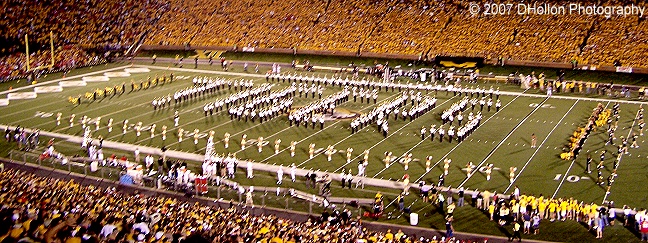What Student Activists Should Take Away From Mizzou

Posted by Nigel Morton
November 10, 2015

The University of Missouri is having a historic fall semester of immense social change. A series of student and faculty demonstrations against systematic racism at the university just forced their president to step down. Happening at the same time, graduate students protested health care cuts the university had made. This resulted in the unionization of graduate workers and direct action taken by the faculty council to fix it. The momentum built by the student efforts is influencing colleges across state boarders including in my home state, Kansas.
Kansans and Missourians have a rivalry that dates back to Bleeding Kansas, when towns burned over the slavery debate. Missourians and citizens of the then Kansas-Nebraska territory battled over whether or not slavery would be part of the Kansas economy. The Kansan abolitionists won, but the tension persists today. When the University of Kansas, whose mascot is named after the Kansans who drove the fight against slavery, takes notes over how Missouri handles racism, you know something monumental happened. Mizzou provided an example for students who are being oppressed and want to make systematic change.
Because the popular narrative is most likely going to center around the athletes joining at the end of the racial justice movement first let’s look at a condensed timeline of the recent changes at Mizzou:
- Both the graduate student movement for better healthcare and the general student movement against racism started with the basic demonstration.
- The graduate students issued a list of demands to make what they wanted clear and staged a walk out when those were not fulfilled.
- It was released, after, that the faculty council had not revisited the needs of graduate healthcare for 12 years which can be credited for the creation of a task force to address the issue and solve it. This was brought to light after attention was directed by the actions of student activists. Eventually, unionization of graduate workers followed.
- The Student Body President spoke out against the racism he faced as a sophomore on Facebook and the post went viral spurring a series of “Racism Lives Here” rallies. Concurrently, the students fought to keep abortion access in Columbia, the home of Mizzou, and stood with Planned Parenthood.
- An intoxicated man yelled racial slurs at the Legion of Black Collegians’ Homecoming candidates. This only added fuel to the flames. Lack of reaction by the administration caused more sit-ins and demonstrations. Students were joined by faculty this time.
- Mizzou students continue to attempt to draw attention from the University President, Tim Wolfe, by facing police threats during a peaceful protest.
- Concerned Student 1950 becomes the name for the movement (1950 is when the first black student was admitted to the university). Concerned Student 1950 follows the example set by the graduate students and releases its own list of demands, including an apology from and the removal of Tim Wolfe.
Now let’s look at Tim Wolfe himself. After repeated accusations of racism perpetuated by the administration, he apologized. Not more than a few hours after he apologized, Wolfe attended a conference at University of Missouri-Kansas City. There he was asked what he thought systematic racism was, to which he replied, “Systematic oppression is because you don’t believe that you have the equal opportunity for success.” This blunder sealed his fate. The Mizzou media did not let him live this down, and despite Wolfe saying that he would not resign, he finally did yesterday. Before it was announced that Wolfe stepped down the faculty was prepared for a sizable walk out.
From all of this, my fellow student activists need to take a way few things: make it clear what you want and turn up the heat when you don’t get it; push officials to make public statements that will seal their fate; and enlist the help of people with leverage such as athletes, faculty, and local news.
Image by DHollon via Wikimedia
Leave a Reply
You must be logged in to post a comment.

